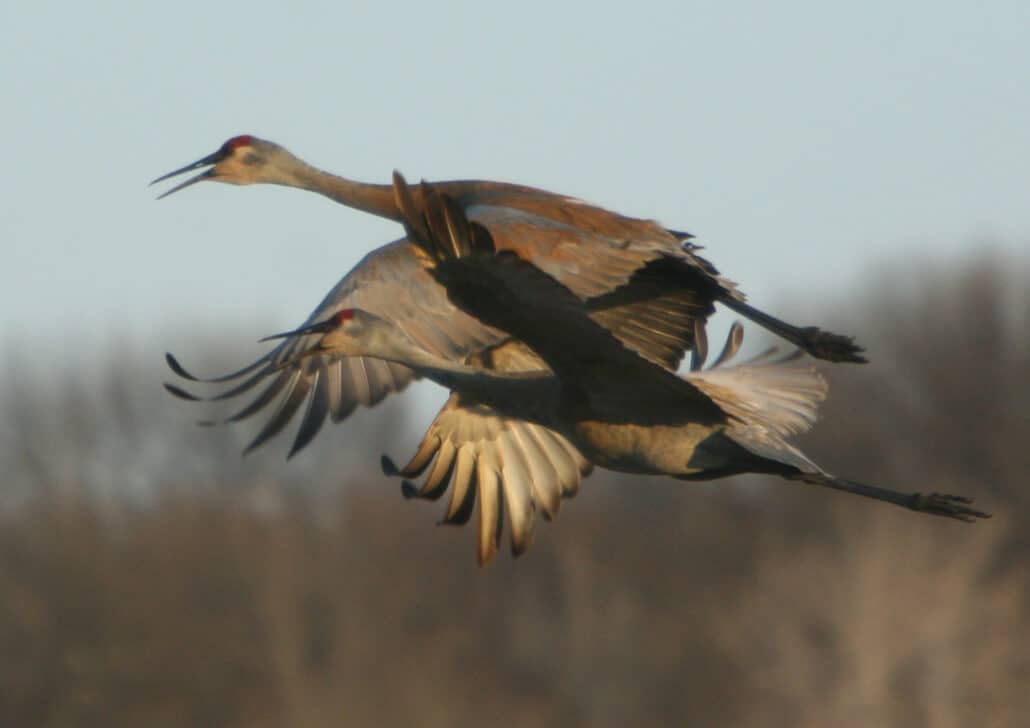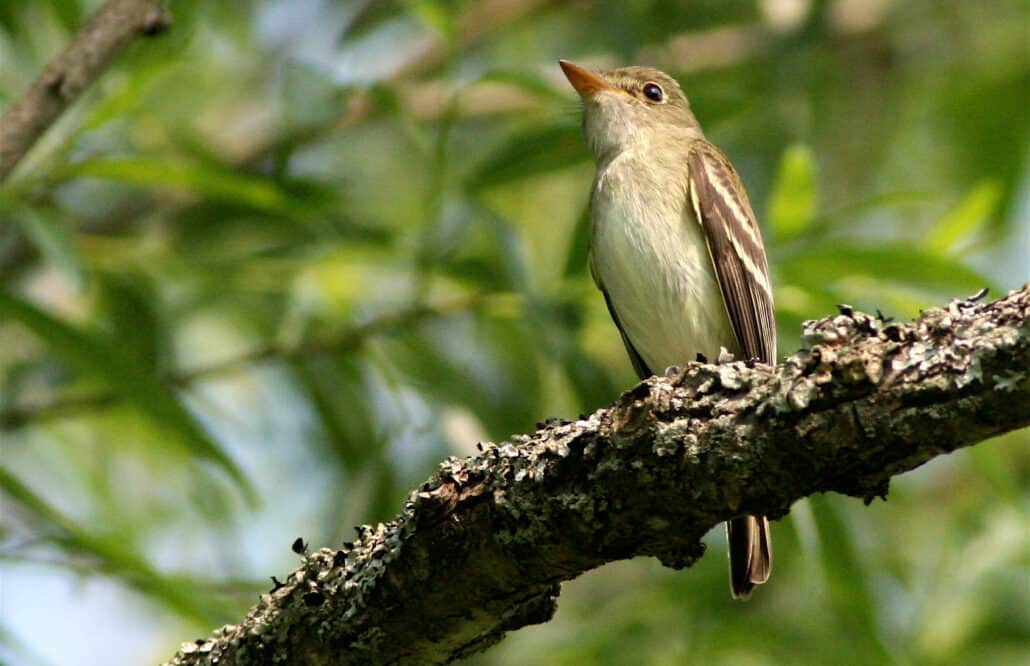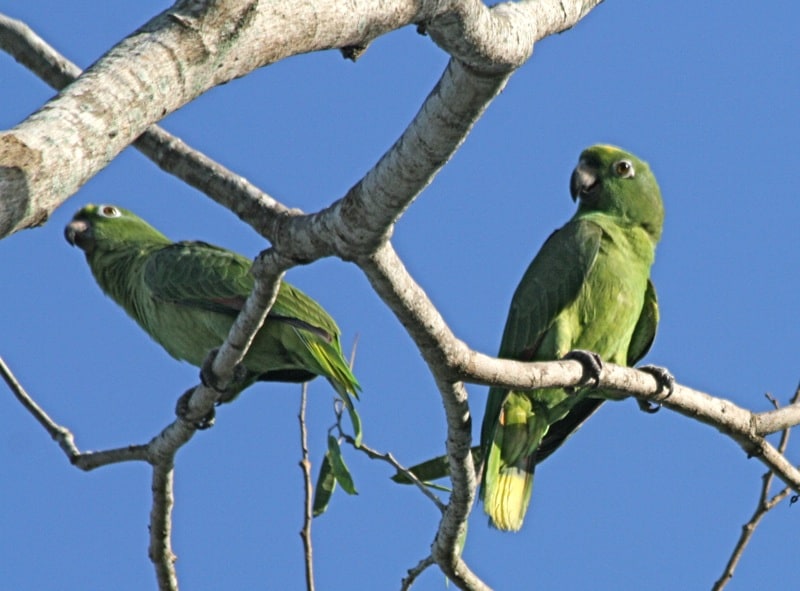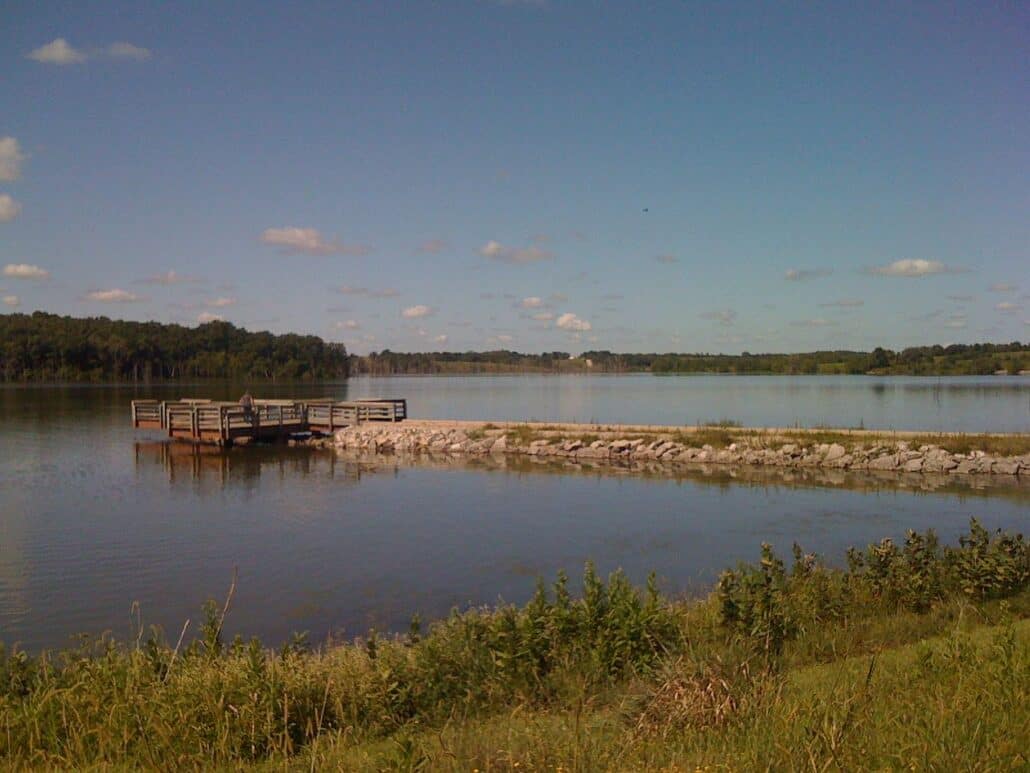Fall Birds of Wisconsin (September, October, November)
During autumn in Wisconsin, thoughts turn to bountiful harvests, fall festivals, and, for some, a certain football team at Lambeau Field. A quick drive around the state, however, makes it abundantly clear that the Packers’ green and gold are only two of the colors gracing the fall landscape.
Sugar maples dazzle in oranges and yellows, ashes wear plum, while tamaracks assume a golden glow. The bluffs along the Mississippi River, the slender Door County peninsula, and other parts of the state attract their share of “leaf peepers,” who are certain to see at least some birds during their travels. And in the state’s many parks and refuges, deep purple New England asters and goldenrod add a colorful floor show for those hitting the trails in search of birds.
In late September and October, the cranberry marshes of central and northern Wisconsin add to the palette. Wisconsin leads the nation in cranberry production, with a yield of more than 300 million pounds of this native fruit annually—more than half of what Americans consume each year. Officially named the state fruit in 2004, the berry got its name from Dutch and German settlers who called it “crane berry,” thinking the blooming vine resembled a crane’s head and bill. The fruit is aptly named, since sandhill cranes nest in the state’s extensive cranberry marshes.
In autumn, sandhill cranes gather by the thousands at staging areas in Crex Meadows Wildlife Area, near Grantsburg in northwestern Wisconsin, and Sandhill Wildlife Area, near Babcock in the center of the state. The cranes roost at night, then disperse in the early morning to feed in neighboring fields or other areas of the DNR lands. The birds usually leave the state in mid-November, then fly south to Florida where they spend the winter months. About a month earlier, whooping cranes leave Necedah National Wildlife Refuge for their journey to Chassahowitzka National Wildlife Refuge in Florida.
Just outside of Alma, in Buffalo County, bird watchers gather on an observation deck to watch the local version of “swan lake.” From late October through November, tundra swans congregate at Rieck’s (pronounced “Ricks”) Lake, providing up-close viewing opportunities for bird watchers of all ages. The birds feed on wild celery, arrowroot, and other water plants, with the “dinner table” sometimes serving one hundred or more birds. The birds head east to the Chesapeake Bay and tidal marshes along the East Coast, where they winter. Volunteers are often on hand to answer visitors’ questions and identify other birds feeding in the shallows.
Migrating waterfowl also gather in large numbers in the Trempealeau and Upper Mississippi River National Wildlife Refuges on the western side of the state. In October, approximately three-fourths of the continental population of canvasbacks can be seen near La Crosse.
Along the shores of Lake Michigan and Lake Superior, hawk watchers gather to catch sight of migrating raptors. The birds follow the shoreline, sometimes in large numbers. Just north of Milwaukee, observers have been rewarded with daily fall totals of broad-winged and sharp-shinned hawks in the thousands. Raptors are often concentrated in this area because winds push them against the leading line of the shore.
But perhaps the biggest show of all takes place in Dodge County, host to a major “fly-in” of Canada geese. Just east of Waupun, a stream of cars drive along Highway 49 into Horicon Marsh, the largest stopover site for migrant Canada geese in the Midwest. Approaching the area, the geese appear to be everywhere for miles: in the farm fields, in flocks overhead, and adorning signs for local businesses. In fall, there have been peak one-day counts of 300,000 geese, joined by other species of waterfowl. In years with low water levels, many migrant shorebirds can also be seen. At dawn and dusk, the scene is particularly impressive as the geese move out or settle in for the night.
While many southbound, or eastbound, birds leave the state, others move in or relocate within the state. Dark-eyed juncos appear in the northern part of the state by mid-September, with birds reaching southern counties about two weeks later. By mid-November, most of these “snowbirds” have vacated the northern counties, and large numbers can be seen flocking along roadsides to the south.
The state’s first rough-legged hawks usually arrive in late September or early October, traveling from their breeding grounds on the Arctic tundra to winter in “balmy” locales, such as the southern half of Wisconsin. The Cedar Grove Ornithological Station in Sheboygan County has recorded as many as thirty-five rough-legs in a day. A buteo associated with cold climates, the rough-legged hawk has feathering down to the toes to help stay warm in frigid temperatures. Watch for this hawk perched atop a tree or hovering in place over an open field in late fall or early winter.
Starting in November, many state bird watchers participate in Project FeederWatch, a winter-long survey of birds that visit feeders in North America. Project FeederWatch is coordinated by the Cornell Lab of Ornithology in partnership with the National Audubon Society, Bird Studies Canada, and the Canadian Nature Federation. FeederWatchers periodically count the highest numbers of each species they see at their feeders from November through early April, then report their findings. The data gathered by this project helps scientists track broadscale movements of winter bird populations and long-term trends in bird distribution and abundance.
And for any who find the trip to the window to observe feeder birds too strenuous, fall offers yet another opportunity. In October, many bird watchers from the state join like-minded people internationally in participating in The Big Sit!, billed as “Birding’s most sedentary event.” Founded by the New Haven (CT) Bird Club and hosted by Bird Watcher’s Digest, The Big Sit’s goal is to tally as many species as possible during a 24-hour period from within a 17-foot circle. Wisconsin Big Sit participants tallied sixty-six species in 2004, all while “perched” on a stool or other seat. In all, 362 species were tallied in North American with 484 worldwide.




